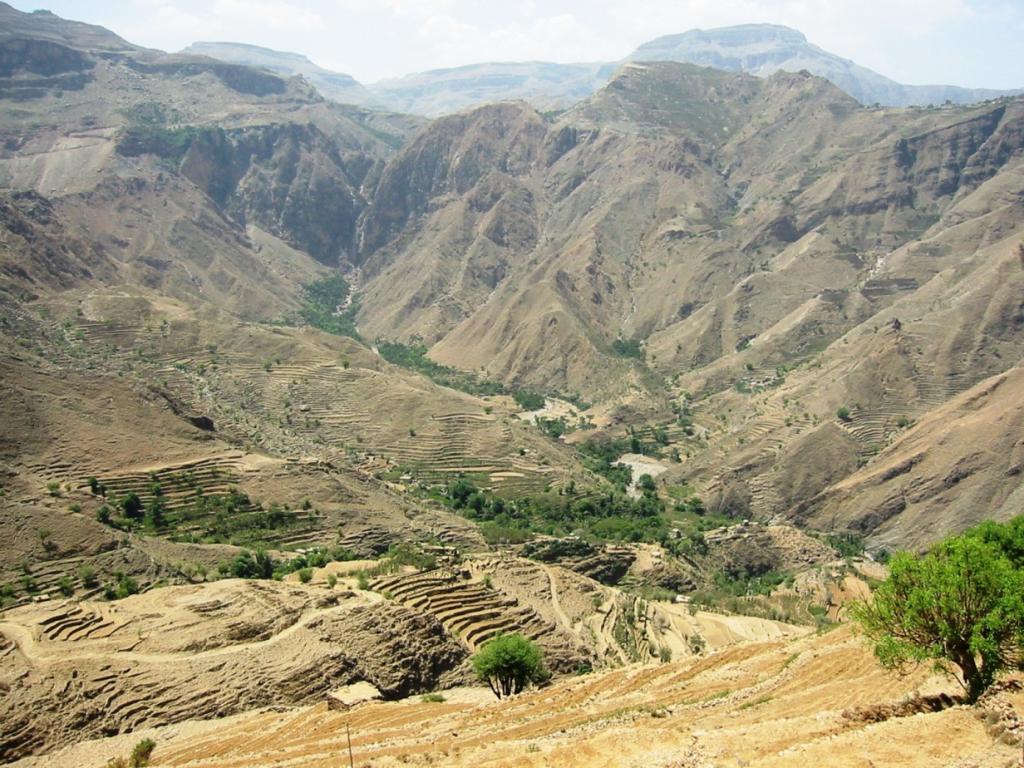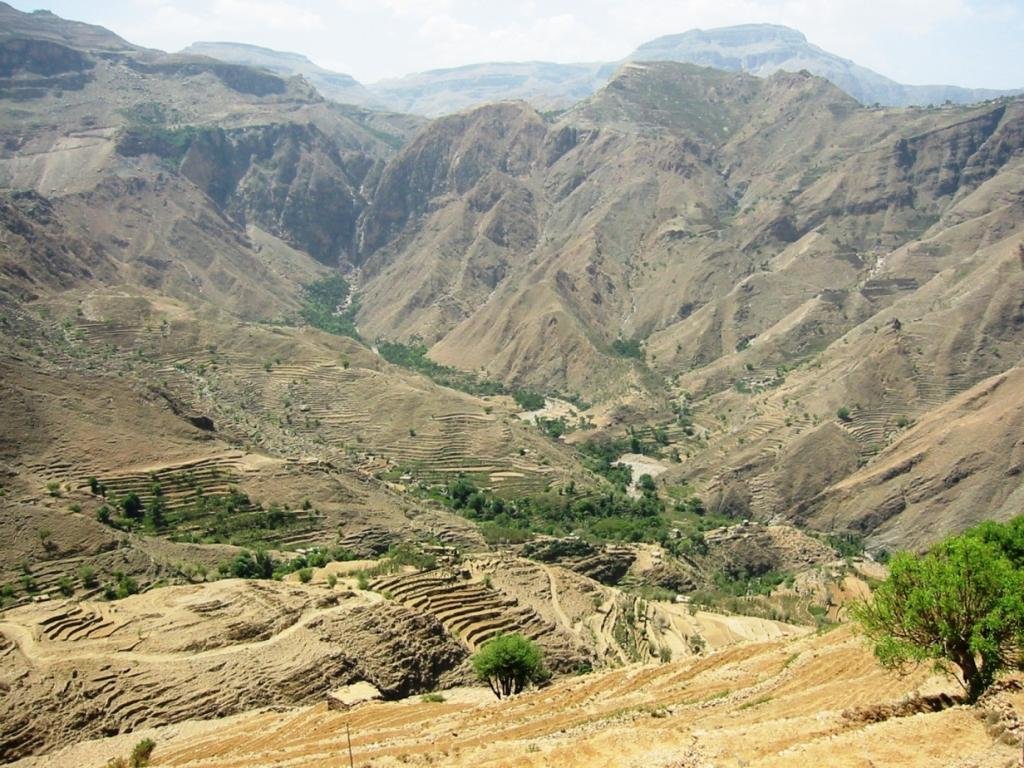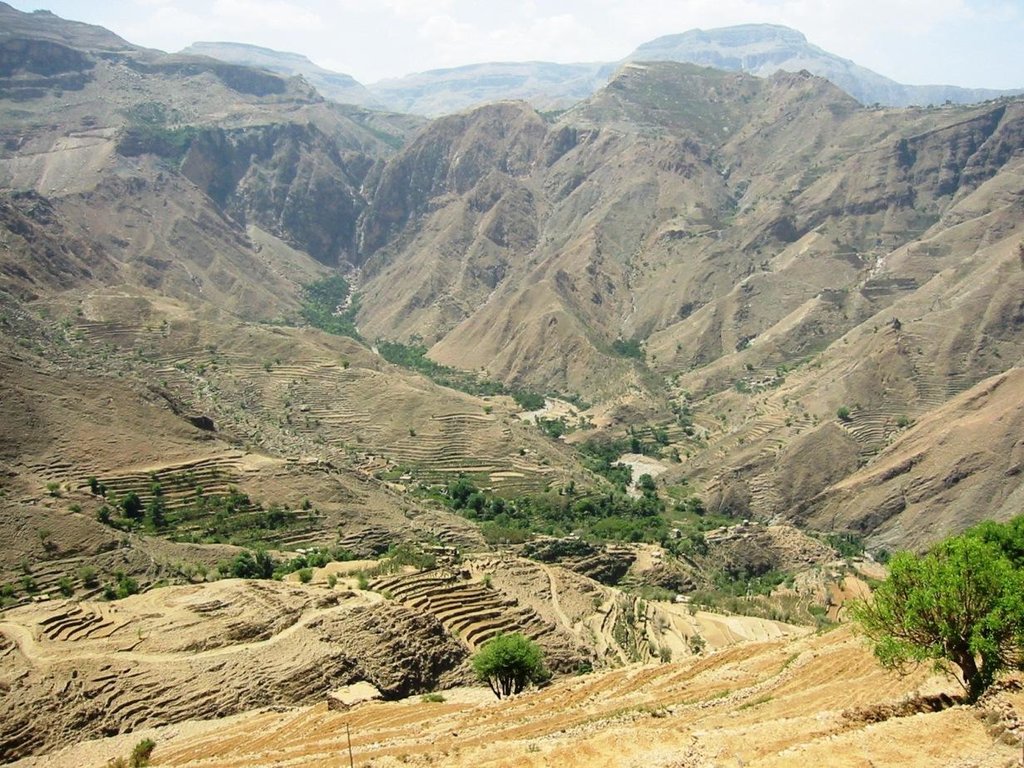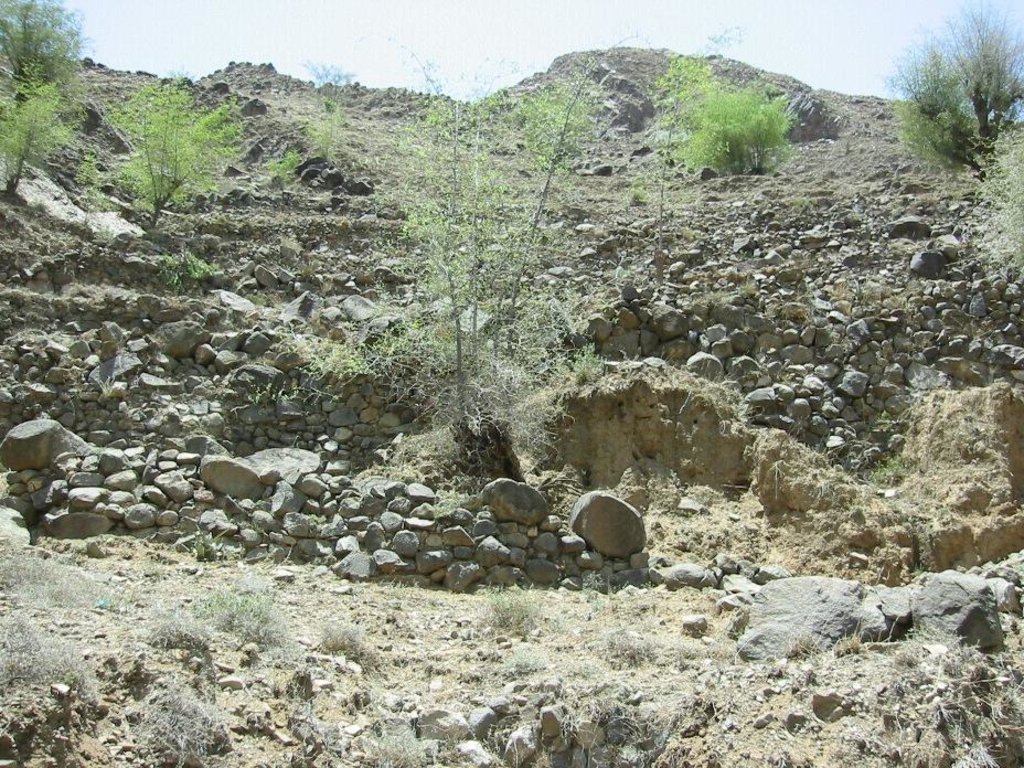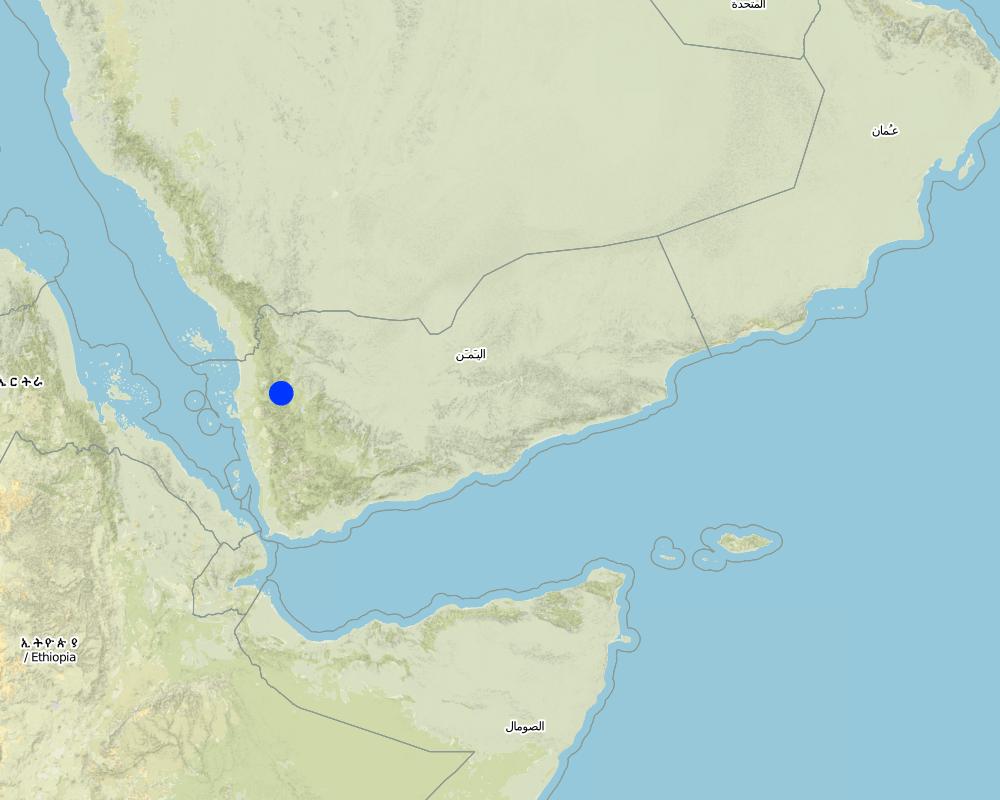leveled mountain terraces [Yemen]
- Creation:
- Update:
- Compiler: ahmed algalal
- Editor: –
- Reviewer: Fabian Ottiger
المدرجات الجبلية المستوية
approaches_2621 - Yemen
View sections
Expand all Collapse all1. General information
1.2 Contact details of resource persons and institutions involved in the assessment and documentation of the Approach
SLM specialist:
Almashreki Mohammed
mashreki2000@yahoo.com
Agricultural Research and Extension Authority, AREA
Yemen
Name of the institution(s) which facilitated the documentation/ evaluation of the Approach (if relevant)
Agricultural Research and Extension Authority (AREA) - Yemen1.3 Conditions regarding the use of data documented through WOCAT
When were the data compiled (in the field)?
09/02/2013
The compiler and key resource person(s) accept the conditions regarding the use of data documented through WOCAT:
Yes
1.4 Reference(s) to Questionnaire(s) on SLM Technologies
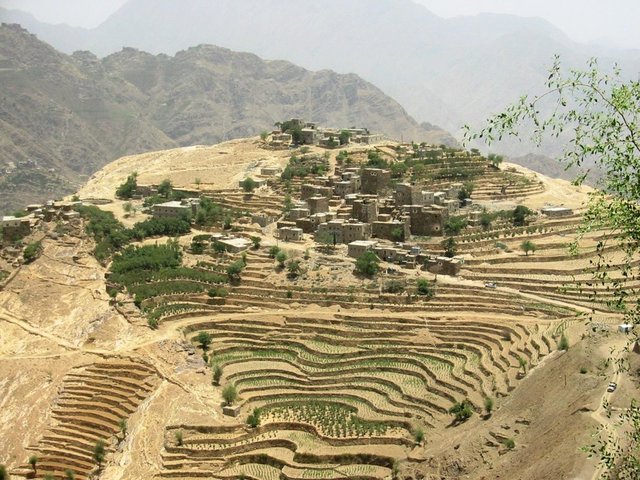
Flat Contour Terraces [Yemen]
Old flat terraces were built in accordance with the contour lines and surrounded by stones to create a suitable environment for the growth of crops, slope stabilization and reduce the risk of runoff and increasing water harvesting.
- Compiler: ahmed algalal
2. Description of the SLM Approach
2.1 Short description of the Approach
organized collective action at a high pace for building agricultural terraces to improve livelihoods in resource-scarce regions in the ground
2.2 Detailed description of the Approach
Detailed description of the Approach:
Aims / objectives: A lot of agricultural land in mountain plains are mountain terraces were established in Yemen a long time ago and which constitute a method agriculturally traditionally unique since 2000 BC where it was built in steep slope places more than 60%, which works to change the shape of the slope (angle and length of the slope), which in turn leads to reduced Speed runoff, which helps to harvest water and protect the land from erosion.
The main objective of the establishment of the stands is to create a suitable environment for the growth of crops for the purpose of self-sufficiency due to a limited of arable land where invoked farmers veterans to create these terraces on the hillsides steep in order to increase the agricultural area and benefit from the runoff water to meet the crop water requirements and thereby increase productivity , in addition to the tower the terraces is working to change the shape of the slope and mitigate the damage resulting from the runoff, on the one hand.
Other works on the terraces to give a special character of beauty and greenery on the slopes and planted joy and hope in the hearts of the people and enhance their adherence to this tradition as long as shares in the stability and meet the needs of the population.
Terraces were built by the community in which concerted action all classes for the construction of terraced disease extraction of soil and collect stones and the end of the settlement of the soil and planting
2.3 Photos of the Approach
2.5 Country/ region/ locations where the Approach has been applied
Country:
Yemen
Region/ State/ Province:
Hajah Governorate
Further specification of location:
Kahlan Afar
Map
×2.7 Type of Approach
- traditional/ indigenous
2.8 Main aims/ objectives of the Approach
The Approach focused mainly on SLM with other activities (Increase the agricultural area, water harvesting, increasing the productivity of the crop)
Creating a suitable environment for the growth of crops, prevent soil loss, minimize the risk resulting from the rapid runoff, water harvesting and increase soil moisture
The SLM Approach addressed the following problems: the lack of arable land, the soil water erosion, poverty
2.9 Conditions enabling or hindering implementation of the Technology/ Technologies applied under the Approach
availability/ access to financial resources and services
- hindering
lack of money
Treatment through the SLM Approach: use of available resources in the region
legal framework (land tenure, land and water use rights)
- enabling
The existing land ownership, land use rights / water rights greatly helped the approach implementation: did not occurs raised to the implementation process because the bleachers at the foundation and found out of nowhere and work on community-created en masse, however, has been the work of legislation to regulate the process and maintenance of irrigation terraces
- hindering
Water Rights
Treatment through the SLM Approach: Documentation of an agreement between the land users on the method of water distribution and irrigation priority so that it is the first former regime from top to bottom
workload, availability of manpower
- hindering
Lack of labor
Treatment through the SLM Approach: work collectively at all stages of the implementation of the technology
3. Participation and roles of stakeholders involved
3.1 Stakeholders involved in the Approach and their roles
- local land users/ local communities
All local community. Approach includes all parts of society, because the person who created the stands is all members of society without exception
Men have more experience and ability to work. Women do works that are commensurate with their ability
3.2 Involvement of local land users/ local communities in the different phases of the Approach
| Involvement of local land users/ local communities | Specify who was involved and describe activities | |
|---|---|---|
| initiation/ motivation | none | |
| planning | none | |
| implementation | none | |
| monitoring/ evaluation | none | |
| Research | none |
3.4 Decision-making on the selection of SLM Technology/ Technologies
Specify who decided on the selection of the Technology/ Technologies to be implemented:
- land users alone (self-initiative)
Explain:
It is originally an ancient technique and exist but need to be rebuilt
Decisions on the method of implementing the SLM Technology were made by by land users* alone (self-initiative / bottom-up)
4. Technical support, capacity building, and knowledge management
4.1 Capacity building/ training
Was training provided to land users/ other stakeholders?
No
4.3 Institution strengthening (organizational development)
Have institutions been established or strengthened through the Approach?
- no
4.4 Monitoring and evaluation
Is monitoring and evaluation part of the Approach?
Yes
Comments:
bio-physical aspects were ad hoc monitored by land users through observations; indicators: wise and dignitaries with the correct mind.
technical aspects were ad hoc monitored by land users through measurements; indicators: wise and dignitaries with the correct mind.
socio-cultural aspects were regular monitored by land users through measurements
economic / production aspects were ad hoc monitored by land users through observations
no. of land users involved aspects were regular monitored by other through measurements
management of Approach aspects were regular monitored by other through measurements
There were no changes in the Approach as a result of monitoring and evaluation
There were no changes in the Technology as a result of monitoring and evaluation
4.5 Research
Was research part of the Approach?
No
5. Financing and external material support
5.1 Annual budget for the SLM component of the Approach
If precise annual budget is not known, indicate range:
- 2,000-10,000
Comments (e.g. main sources of funding/ major donors):
Approach costs were met by the following donors: local community / land user(s) (Local community): 100.0%
5.4 Credit
Was credit provided under the Approach for SLM activities?
No
6. Impact analysis and concluding statements
6.1 Impacts of the Approach
Did the Approach help land users to implement and maintain SLM Technologies?
- No
- Yes, little
- Yes, moderately
- Yes, greatly
teamwork is one of the most important elements of sustainable land and protect it from deterioration and this the approach, which followed by the old farmers even continued the stands terraces to this day.
Did other land users / projects adopt the Approach?
- No
- Yes, little
- Yes, moderately
- Yes, greatly
Did the Approach lead to improved livelihoods / human well-being?
- No
- Yes, little
- Yes, moderately
- Yes, greatly
Did the Approach help to alleviate poverty?
- No
- Yes, little
- Yes, moderately
- Yes, greatly
The increase in the agricultural area, water harvesting areof the most essential ingredients to alleviate poverty.
6.2 Main motivation of land users to implement SLM
- increased production
Increase the amount of production
- environmental consciousness
- The creation of new agricultural land
- Stability and improve the people's livelihood
6.3 Sustainability of Approach activities
Can the land users sustain what has been implemented through the Approach (without external support)?
- yes
If yes, describe how:
Terraces built without support and continued to the present day
6.4 Strengths/ advantages of the Approach
| Strengths/ advantages/ opportunities in the compiler’s or other key resource person’s view |
|---|
| Improve the livelihoods and the stability of society (How to sustain/ enhance this strength: Continuing to maintenance operations) |
| A tributary of real teamwork in advancing progress and achieve the desired goal, namely, agricultural terraces and teamwork lead to the strengthening of the social fabric and the bonds of love and assistance among themselves (How to sustain/ enhance this strength: Community awareness and land users in particular, the importance of the continuation of collective action to ensure the sustainability and continuity of the stands that need to unite everyone to preserve them for future generations.) |
| Take advantage of all the resources available in the region in the process of construction of terraces traditional methods and in accordance with the natural conditions and topography of the region |
7. References and links
7.1 Methods/ sources of information
- field visits, field surveys
- interviews with land users
7.2 References to available publications
Title, author, year, ISBN:
Report of the environmental resources available in the Afar region Kahlan (Mashreki, 2003)A study of land degradation in the Republic of Yemen (Yemen - ACSAD, 2002
Available from where? Costs?
Agricultural Research and Extension Authority, AREAAgricultural Research and Extension Authority, AREA
Title, author, year, ISBN:
A study of land degradation in the Republic of Yemen (Yemen - ACSAD, 2002)
Available from where? Costs?
Agricultural Research and Extension Authority, AREA
Links and modules
Expand all Collapse allLinks

Flat Contour Terraces [Yemen]
Old flat terraces were built in accordance with the contour lines and surrounded by stones to create a suitable environment for the growth of crops, slope stabilization and reduce the risk of runoff and increasing water harvesting.
- Compiler: ahmed algalal
Modules
No modules


